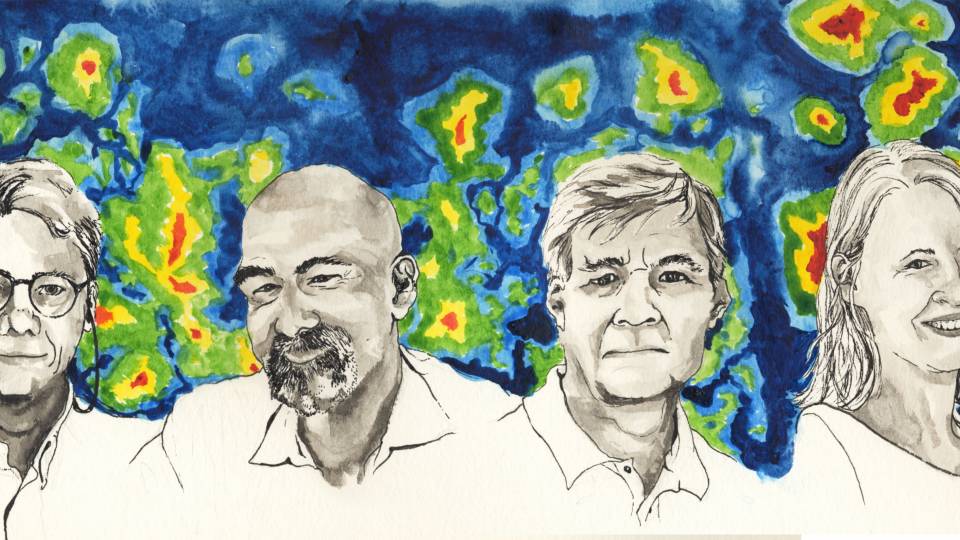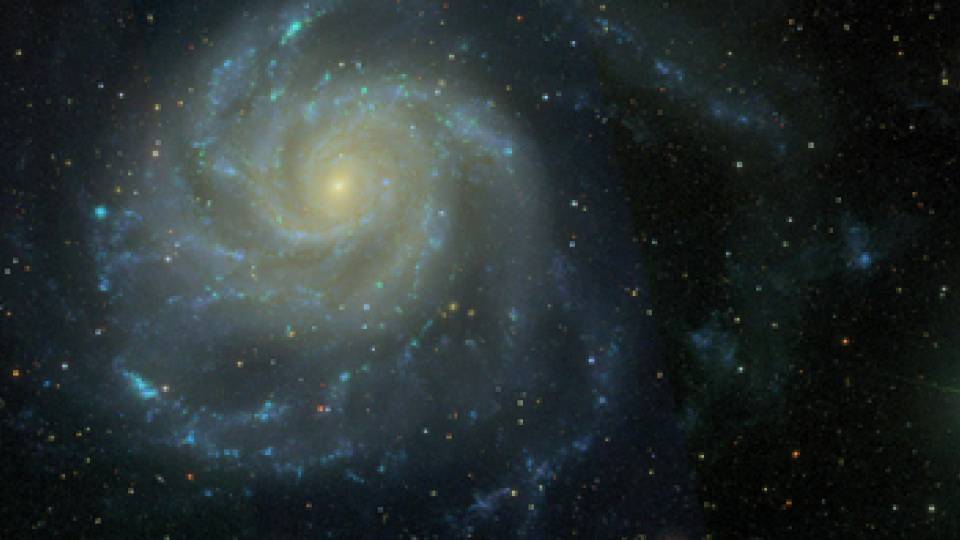The year 2003 was an extraordinary one in the field of astrophysics as decades of theoretical and experimental advances -- many with roots at Princeton University -- converged into a unified picture of the universe that is startling in both its strength and strangeness.
The consensus view -- which seemed incredible just five years ago -- is that the universe is expanding at an accelerating rate, with galaxies being pushed away from one another by a mysterious "dark energy" that eventually will dominate the universe. Scientists believe this dark energy already constitutes three-quarters of the mass of the universe and nearly all the rest is a mysterious, invisible "dark matter." The "ordinary" matter we know -- the stuff of rocks, air, water -- makes up a mere 4 percent of the cosmos.
Along the way to this disquieting picture, astrophysicists have settled many other longstanding questions about the origin, evolution, age, geometry and fate of the universe.
In its year-in-review issue of Dec. 19, Science magazine declared these advances to be the "Breakthrough of the Year." The magazine, published by the American Academy for the Advancement of Science, cited two experimental programs, one new and the other ongoing, that led the way in confirming and amplifying this new view of the universe. While both projects are the result of major nationwide, and even international, collaborations, both had their origins and continuing leadership at Princeton. In addition, many of the theoretical advances that support the discoveries emerged from Princeton research.
"It really is a triumph for Princeton cosmology," said David Spergel, professor of astrophysics. "At least a dozen people at Princeton played key roles in this convergence."
The year's most eye-catching results came in February from the Wilkinson Microwave Anisotropy Probe (WMAP), a satellite that produced a detailed map of the "cosmic microwave background," the remnants of the oldest light in the universe as it emerged from the fireball of the big bang. The satellite, which continues to pour in data, grew out of collaboration between NASA and Princeton with additional contributors at other institutions. NASA also announced in February that it had named the satellite after David Wilkinson, the late Princeton professor of physics who conceived the project.
The WMAP results meshed with rivers of data coming from the Sloan Digital Sky Survey , a ground-based effort to map millions of galaxies across a large swath of the sky. While the survey has been producing data for several years, the SDSS team announced in October a major analysis of the distribution of galaxies, which, among other conclusions, confirmed that the universe is dominated by dark energy. The SDSS project is supported in large part by the Sloan Foundation and is a collaborative effort of 11 institutions including Princeton, where it began with the ideas and camera designs of astrophysics professor James Gunn.
"Peyton Hall has been a place of scientific ferment as these results come in," said astrophysics professor Michael Strauss, who is the scientific spokesperson for SDSS, referring to the building that houses the department. "The WMAP and SDSS groups have been sharing their results with each other and the theorists, and the synergy has allowed us to do a lot of great science. It's been a lot of fun."
Among the contributors to the underlying ideas are professors of physics James Peebles and Paul Steinhardt, who laid much of the theoretical groundwork. Astrophysics professors Neta Bahcall and Jeremiah Ostriker also established key ideas. Uros Seljak, assistant professor of astrophysics, was a co-developer of the mathematical calculations used to interpret the WMAP data and to show how all the pieces fit together.
Leaders of the WMAP satellite project at Princeton were physics professor Lyman Page and research staff physicist Norm Jarosik, as well as Spergel. Chris Barnes, Hiranya Peiris and Mike Nolta, who recently earned Ph.D.s at Princeton and are now postdoctoral fellows, also led major parts of the project. In addition to Gunn and Strauss, Princeton leaders of the SDSS project include astrophysics professor Jill Knapp and research staff member Robert Lupton.
In an unrelated honor for Princeton astrophysics in 2003, NASA announced Dec. 18 that it had named a major new space telescope after the late Princeton astrophysicist Lyman Spitzer. The Spitzer Space Telescope, which has yielded the first of its own breathtaking images of the cosmos, promises to fuel further advances for years to come.
Contact: Lauren Robinson-Brown (609) 258-3601


